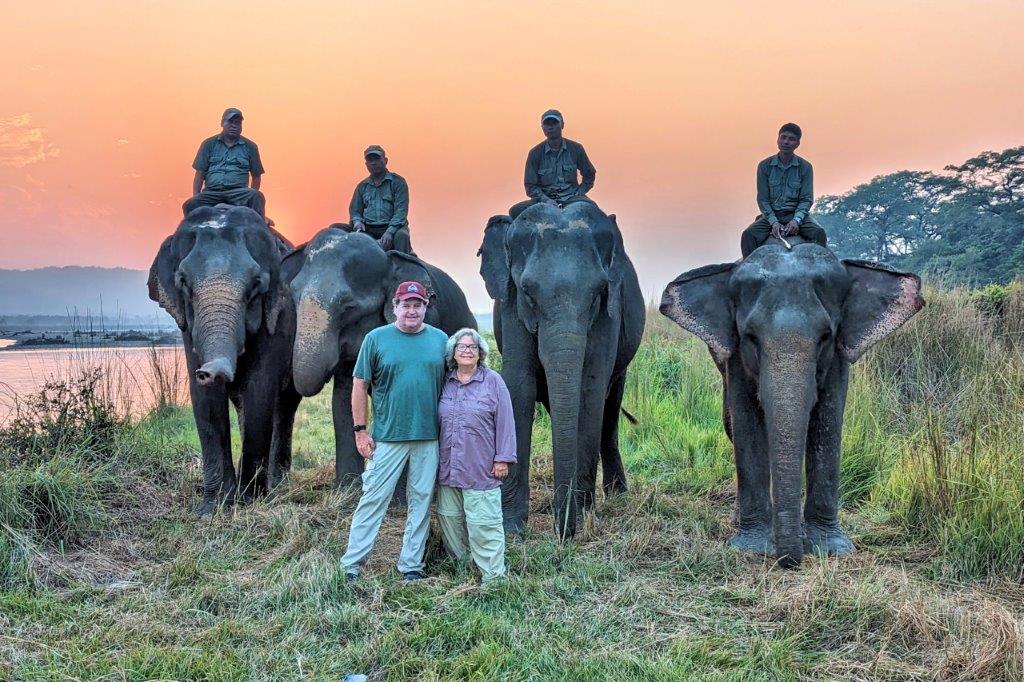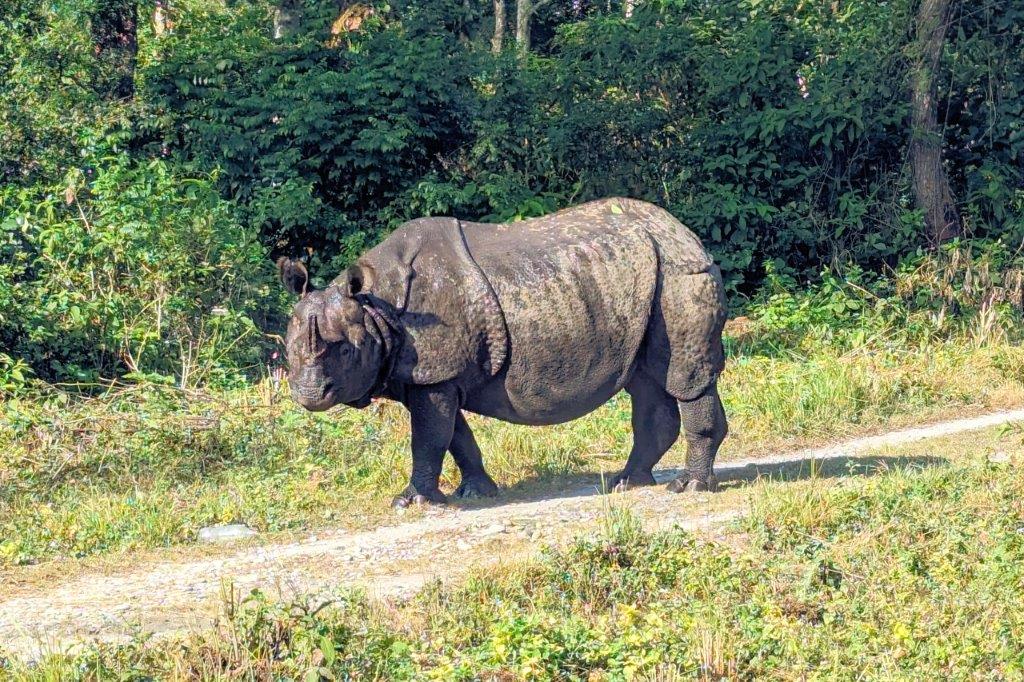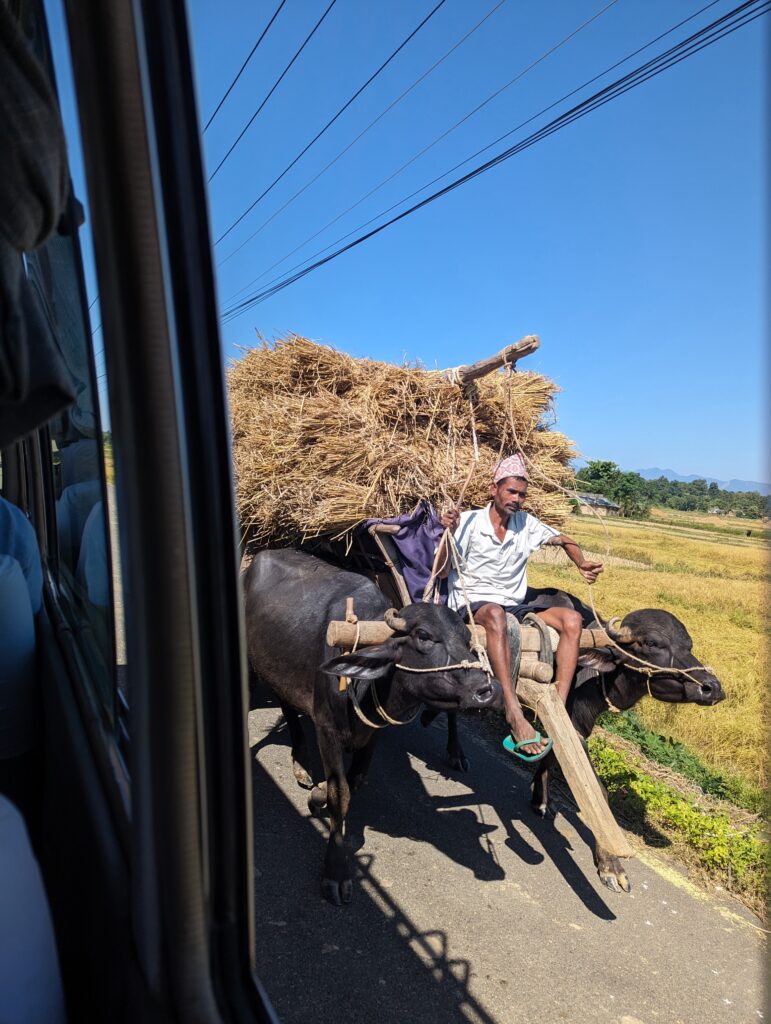After we left Lumbini, we had good roads for a bit before we got to the Mahendra Highway over the mountains with the abysmal conditions. (More on the roads later.)



We walked with the elephants in the afternoon to the river for drinks at sunset.


The highlight of the Chitwan NP safari was seeing rhinos up close and personal.

Now about the roads … abysmal is an inadequate description for them. The government goal is to widen and improve the Mahendra Highway, major east/west highway connecting India with Kathmandu. Great idea BUT their execution leaves a lot to be desired. It appears that they cut a new lane on each side of the entire highway, building retaining walls along the way, have put in some of the concrete supports for the needed bridges along the entire way or are working on it. BUT as they did this, the existing road has been destroyed – holes, no pavement, dust, dirt, it’s a disaster and no section is complete, The construction has been going on for 5 years with nothing complete. Even the village roads are damaged. Some of the bridge pieces that are “stored” in the towns next to the roads have trees growing out of them. We average maybe 20 miles an hour.
We don’t know who is managing or paying for this but I’m sure I’ll be dead before any of this road is done. Given the amount of traffic, I’m not sure why they even need to widen the road.
We started keeping track of who uses the highway. Here’s the list.
• People walking
• Cows, goats, dogs in the road
• Monkeys on occasion
• Bicycles with and without loads and carts
• Tuk-tuks
• Children in street
• Motorcycles with and without passengers and loads (passenger carrying bicycle with training wheels)
• Scooters
• Ox carts
• Busses that stop wherever
• Trucks
• Overcrowded tourist vans
• Private cars
• Farm equipment
• Calming devices and police checkpoints for licenses, taxes, registration









